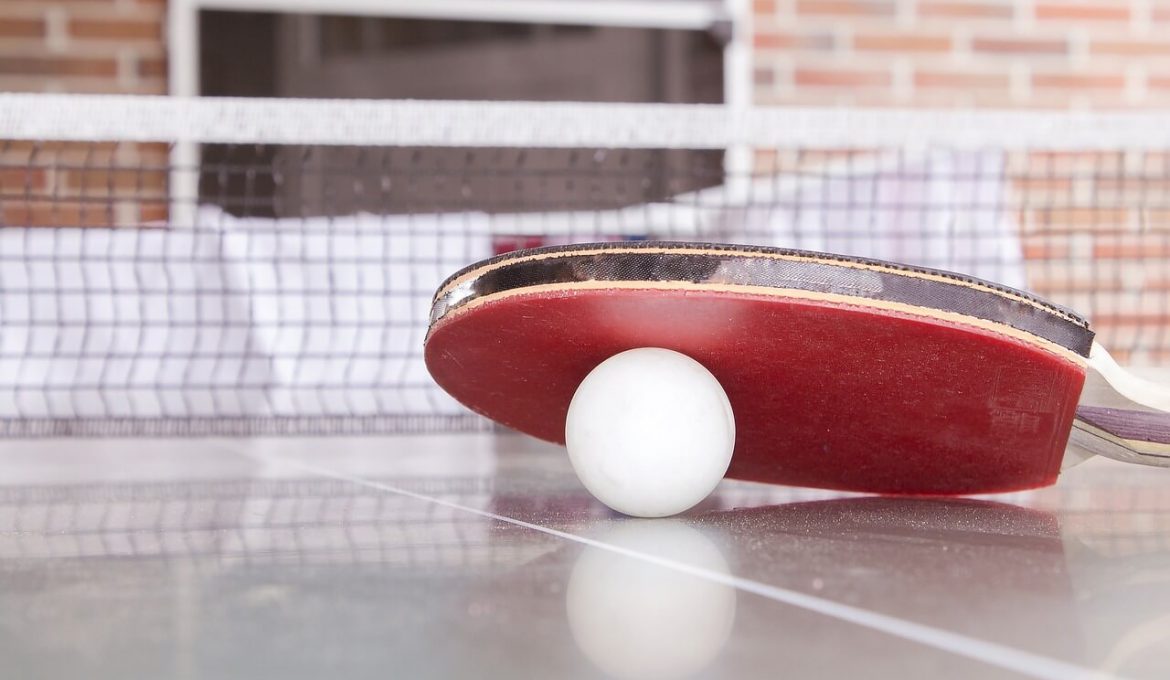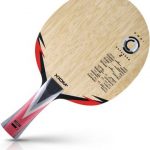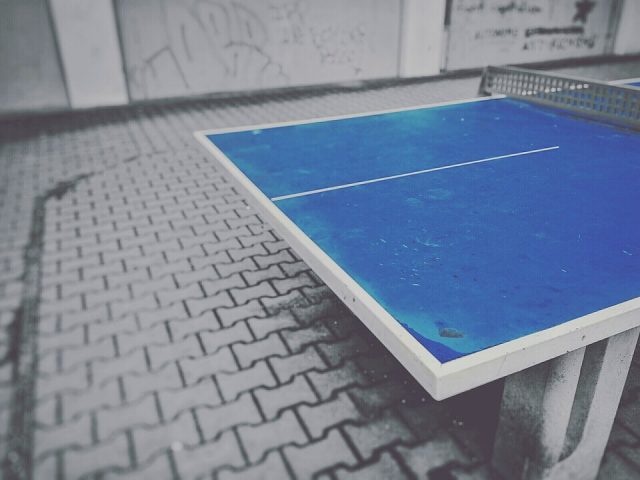We take a look at what features make the best ping pong paddles and give you our top five picks for beginners and five for advanced players.
Ping Pong, aka Table Tennis is a complicated sport. With a wide range of playing styles, moves, paddle variations and even its own vocabulary, it is hard to assimilate all the facets of the sport quickly.
With all the options and styles available for paddles, a common question a beginner player might ask is “What is the best ping pong paddle brand to start with?”, but no matter the experience and level, all players at one point or another have come across the question: “What is the best ping pong paddle for me?”
That’s what we’ll try to answer here with our top 10 ping pong paddle reviews.
Most players realize that there is not just ‘one’ paddle that is right for everyone, but there are features and characteristics that make a paddle a good choice for you, based on your style and level of experience.
But before we start looking at ping pong paddle reviews, let’s take a look at the factors to think about before selecting a paddle that fits you.
Your Playing Style
There are a myriad of playing styles that can be generally categorized as Offensive, All Around and Defensive styles. Within those categories there are levels.
One paddle may be graded OFF +, DEF- or any number of combinations. A paddle may even have one side with one grade, and the other side a different grade, e.g. ALL+/OFF-.
Generally an offensive player will prefer speed, while a defensive player wants more control. It is best to know your playing style and a high quality paddle will have a rating to guide you. A premade paddle of high quality will be much less expensive than a custom blade and should include a rating.
A player who uses a lot of spin in their game wants a slower blade so the paddle has time to contact the ball and give it a good spin.

Your Level of Experience
You level of experience is an important consideration when choosing the best table tennis paddle for yourself. An intermediate player might want a paddle with high control mixed with good spin and speed, whereas a beginner might be better off with an all-around paddle that they can use for defense and offense as they learn the game.
As we go through the characteristics and features a paddle might have, we will point out what works best for beginners as well as advanced players.
The All Important Blade
The blade is the wood (or other material) making up the majority of the paddle, including the head and handle. There are several facets of the blade to cover and we will take them one by one.
Plies
Plies are the number of layers of wood or other material the paddle has. The thinner the blade, the more flexible it is, making them good for looping and getting a top-spin on the ball. A medium plied blade is better for driving shots, and the thick blades work well for blocks.
A blade may have anywhere from one to seven plies, with a five ply being the most common.
Many players use all wood paddles, but some use blades that contain carbon, Kevlar, titanium, basalt fiber, special plywood lamination, Zephylium, ZL Fiber, glass fiber, aluminum, arylate and many others.
The material used affects the speed and feel of the blade. Material may also change the size of the sweet spot. Only experimentation will let you know what works best.
Head Size/Shape
Interestingly, head size on the blade does not affect air resistance much, but a larger head size uses more rubber and is therefore heavier and shifts the weight to the head of the paddle.
Balance/Weight
Unsurprisingly, a heavier paddle allows you to return a shot with less movement, at the cost of speed and power. A heavier blade also causes loss of sensation with the ball. It will be harder to ‘feel’ or ‘finesse’ the ball with a heavy paddle.
A heavy blade does come in handy to players who use a lot of spin in their moves, so the way you play matters.
Balance, in terms of a table tennis paddle, is where the weight of the paddle is distributed. Head-heavy paddles have the weight focused toward the head. Head light paddles are focused toward the handle.
Head-heavy blades are favored by hitters and loopers, as they generate speed and put a good spin on the ball. Defensive players and blockers like a head-light racket which feels easier to control.
The general consensus is that heavy blades have more power and lighter blades are faster, but this all depends on the player’s skill and experience. An advanced player can be quite fast, even with a heavy blade.
The weight of a paddle is changed significantly depending on the rubber used on the paddle.

The Four Ratings – Speed, Spin, Control and Stiffness.
All paddles have a certain amount of speed, spin, control and stiffness. Unfortunately manufactures use different ratings for these so it can be challenging to compare.
Not all manufactures provide ratings for every characteristic, especially when the manner of play influences the characteristic more so than the material. This is the case with long pip rubber where the pips change direction only to the extent of the opponents shot.
Speed
The overarching theory in table tennis blade is that faster blades are preferred by more aggressive players, and slower blades are preferred by the defensive players.
Those who use a lot of spin also tend towards slow blades because they want the blade to contact the ball for the most time possible to generate the spin.
The ratings we discussed earlier had something to do with blade speed. Offensive blades are thought to be fastest, so OFF+ would be the fastest rated blade. Alternately, Def- is the slowest blade and a rating of ALL falls in the middle.
The faster a blade is the farther the ball will ricochet, and will therefore require more skill to control.
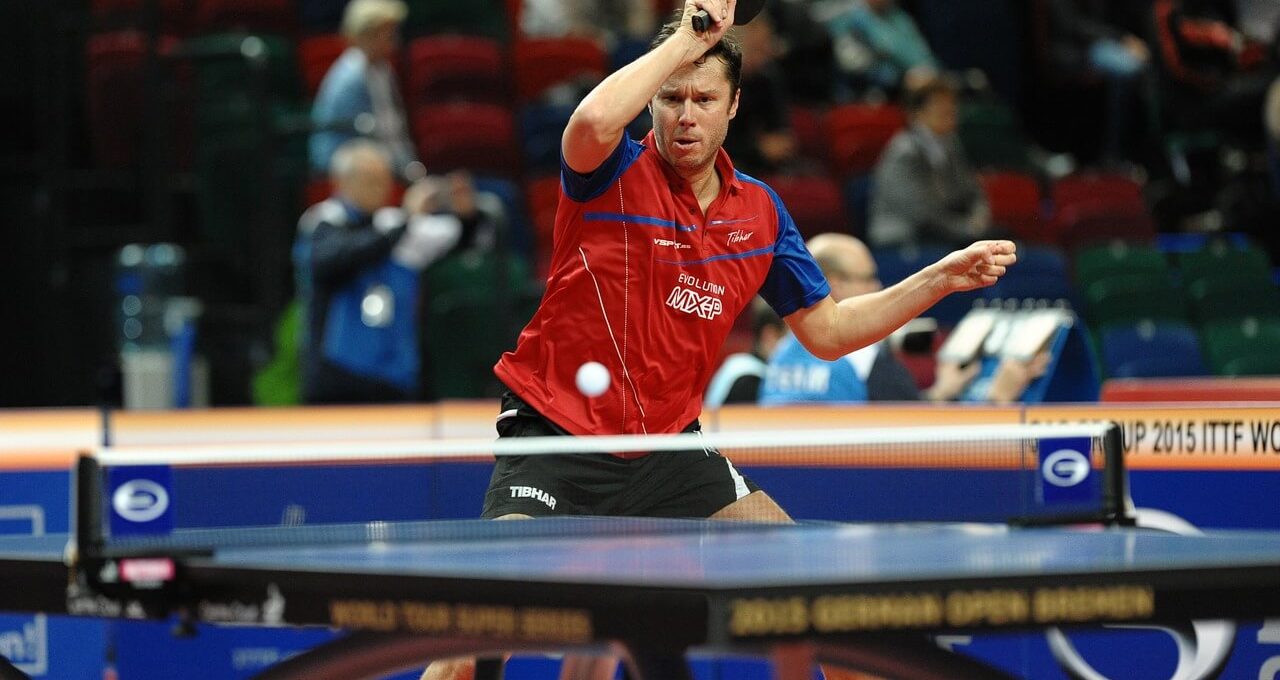
Spin
Spin refers to how much (or little) a constructed paddle will spin the ball. Some players, like choppers or loopers like a paddle with a high spin rating, but a high spin rating makes it more difficult to control the ball.
Also, rubber with a high spin rating is not only affected by your shot, but also reacts more to the player’s shot.
Control
Control is rated for each paddle and is a factor of stiffness, rubber texture, sponge hardness and speed.
A defensive player will look for a paddle with good control. An offensive player will choose speed over control.
Control is generally thought to be found with less spin and speed, however some might argue that less of these two things make certain shots harder to control.
Stiffness
A stiff blade will be less flexible and it will be a faster blade, but will be harder to achieve spins with. A flexible blade is better for creating spin.
Handle/Grip
There are two blade types that correspond to the handle, Penhold and Shakehand.
Shakehand
Shakehand is a hold that is similar to shaking someone’s hand. This hold is used for the majority of players. The Shakehand blade has three holds, flared, anatomic and straight.
Penhold
Penhold is a hold more like holding a pen, hence the name. Within the Penhold style there are quite a few variables.
As this style is much less common and highly specialized, this guide will focus on the Shakehand style the majority of players use.
Choosing a handle is a matter of preference; choose what feels right to you. Players who rely on forehand moves often favor flared handles, whereas those whose backhand stroke is equal to their forehand stroke prefer straight handles.
Straight handles are also the choice of a good number of defenders and spinners, because these handles are easy to turn.
Rubber
Interesting tidbit: If you plan to use your paddle at a club, or table tennis competition, many require the rubber on each side to be red and black respectively to prevent tricking your opponent by having specialized rubber of the same color.
The rubber on your paddle is one of the most important characteristics. It can add weight, changing the balance, and the texture can change the speed, control and any number of other variables. You can use a different type on each side.
Beginners should avoid exotic rubber sheets such as anti-spin or pimples because these textures require a lot of skill to employ.
There are four basic textures to rubber sheets as follows:
Smooth
This is the most popular style and offers a lot of spin. Defensive players, all around players, loopers and hitters use this style of rubber.
Short Pip
This is a pimpled rubber that cuts the spin of the ball. This style is used by players who do not employ much spin in their game, play close to the table. It is sometimes used for all around players and defense players.
Long Pip
Long pips change the direction of the spin and can be hard to get used to. The advantage of this pip is that once you have mastered it you have a distinct advantage over players who are less experienced with the way it changes the shots.
It is not a good rubber for offensive play and most who use it only place it on one side of the paddle.
Anti-Spin
This is a smooth rubber that stops the spin of the ball and slows it down. It is usually placed on one side only. It is best for advanced players.
As for sides, choose one rubber for backhand strokes and another on the forehand side.
Tip for a beginner: Choose two smooth rubbers with an average thickness, harder sponge and soft rubber while you are developing your style.
Sponge
The sponge, which is generally sold with the rubber can range from hard to soft. A hard sponge will need more speed to get the best performance.
Thick sponges give less control, but more spin, and incidentally, more weight. Thin sponge gives better control and adds less weight. Generally defensive players use hard to no sponge, and offensive players use softer sponge to get the spin they want.
Tip for a beginner: To have the best table tennis paddle with the best outcome, use a thinner sponge until you develop an intermediate level of skill and have established your playing style.
A Word About Brands
Some of the most popular and best table tennis paddle brands and makers include Stiga, Butterfly, Donic Waldner, YEO, ZLC, Nittaku, Yasaka, XIOM, Tibhar, Joola, Cornilleau, Double Fish, DHS among others.
With the best ping pong paddle brands in mind, let’s take a look at the five ‘best’ ping pong paddles for beginners and advanced players.
Keep in mind, there is no ‘best’ necessarily, because so much depends on your style and experience, but there are paddles that stand out due to quality and performance.

TOP 10 Table Tennis and Ping Pong Paddle Reviews
5 of the Best Ping Pong Paddles for Beginners
Killerspin JETBlack Table Tennis Paddle
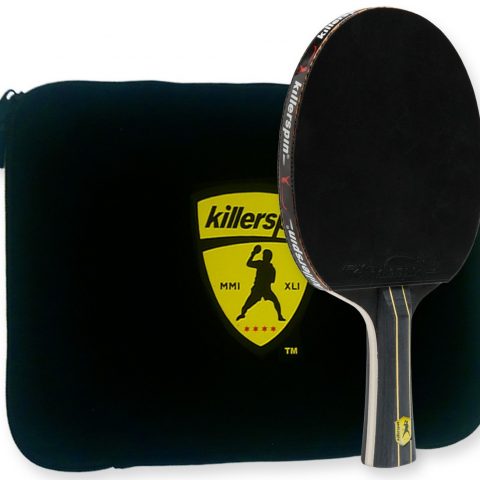
Click Here for Pricing, Pictures and Reviews on Amazon.com
- Level: Beginner
- Blade Material: Wood
- Spin/Speed/Control: 8.2 / 6.8 / 9
- Plies: 5
- OFF/DEF/ALL: DEF
- Comments: All black is very stylish and this paddle has very good control. Great Price too. One of the best table tennis rackets for a beginner.
PROS
- Good mix of control
- Speed and spin for the beginner
CONS
- Two black rubbers
- Not for competition or regulation play
- Rubbers come unglued
Double Fish Carbon Table Tennis Racket 8 Star 8A-C

Click Here for Pricing, Pictures and Reviews on Amazon.com
- Level: Beginner
- Blade Material: Carbon/ plywood
- Spin/Speed/Control: 9.5 / 9 / 9.5
- Plies: unknown
- Comments: Between intermediate and beginner level – it’s for a really a high level beginner. Great with speed, control and spin. Very sticky rubber.
PROS
- Great paddle at an economy price
CONS
- The case is a bit small
Cornilleau Tacteo 30 Weatherproof Racket
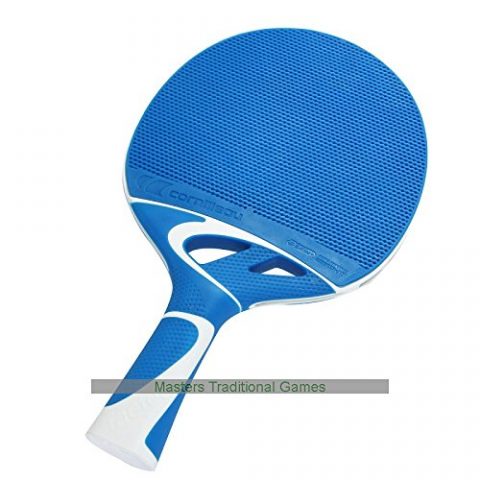
Click Here for Pricing, Pictures and Reviews on Amazon.com
- Level: Beginner
- Blade Material: Injected Polymer
- Spin/Speed/Control: 5 / 5 / 8
- Plies: 1
- OFF/DEF/ALL: DEF
- Comments: Outdoor play, virtually unbreakable while maintaining quality. If you are a beginner, probably one of the best table tennis racket choices to pick from.
PROS
- Great for beginners and students
- Good control, everything a beginner needs
CONS
- Not a competitive paddle, rubber is the same on both sides
STIGA Evolution Table Tennis Racket

Click Here for Pricing, Pictures and Reviews on Amazon.com
- Level: Beginner
- Blade Material: Wood
- Spin/Speed/Control: 94 / 96 / 90
- Plies: 6
- OFF/DEF/ALL: OFF
- Comments: Features Shock Dispersion Technology
PROS
- Good spin and speed
- Regulation approved
- Easy grip does not tend to get heavy as you progress
CONS
- No carry bag
- Challenging to get used to
Butterfly 8827 Timo Boll Table Tennis Racket

Click Here for Pricing, Pictures and Reviews on Amazon.com
- Level: Beginner
- Blade Material: Wood carbon
- Spin/Speed/Control: 80 / 95 / 65
- Plies: 5
- OFF/DEF/ALL: ALL
- Comments: Carbon plies for stiffness.
PROS
- Good with defense and all around
- Can catch a spin
CONS
- Some feel it is too heavy
5 Best Ping Pong Paddles for Intermediate Players
Zhang Jike-alc Blades Quality Goods

Click Here for Pricing, Pictures and Reviews on Amazon.com
- Level: Advanced
- Blade Material: Wood/Arylate/Carbon
- Spin/Speed/Control: unknown / 9.3 / 9.1
- Plies: 7
- OFF/DEF/ALL: OFF
- Comments: Weight balance toward the handle. Thicker handle. Despite the high price, it’s one of the best table tennis racket for advanced players.
PROS
- Balanced and forgiving blade with lots of speed
- No vibration
- Fast, but not too fast to control
- A good balance of speed and control
CONS
- High Price
JOOLA Spinforce 900 Racket

Click Here for Pricing, Pictures and Reviews on Amazon.com
- Level: Advanced
- Blade Material: Carbon/ plywood
- Spin/Speed/Control: 9.5 / 9 / 9
- Plies: 7
- OFF/DEF/ALL: OFF
- Comments: Sponsor of the US National Team. Great for aggressive style.
PROS
- Great for the advancing player ready to learn some serious spinning
CONS
- Pricy
- Can be heavy, takes some getting used to
Yasaka MARK V Racket, Flared Handle

Click Here for Pricing, Pictures and Reviews on Amazon.com
- Level: Advanced
- Blade Material: Wood
- Spin/Speed/Control: 100 / 100 / 65
- Plies: 5
- OFF/DEF/ALL: OFF
- Comments: Swedish competition blade
PROS
- One of the best assembled rackets
- With a huge sweet spot
CONS
- Rubber is a bit fragile, and the spin/lack of control makes it definitely not for beginners
New XIOM Hayabusa Z Table Tennis Shake Hand
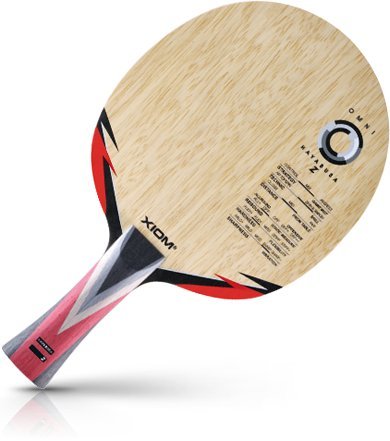
Click Here for Pricing, Pictures and Reviews on Amazon.com
- Level: Advanced
- Blade Material: Wood and composite material and Zephylium
- Spin/Speed/Control: unknown / 8.5 / 9
- Plies: 7
- OFF/DEF/ALL: OFF
- Comments: 7 Ply Zephylium professional OFF-.
PROS
- Fast with good control
- Accurate spin loading
- Wood like flexibility
CONS
- A bit heavy
DHS X6006 (Penhold) New X-Series SUPERSTAR

Click Here for Pricing, Pictures and Reviews on Amazon.com
- Level: Advanced
- Blade Material: Wood
- Spin/Speed/Control: Hi spin / High Speed / Good
- Plies: 5
- OFF/DEF/ALL: OFF
- Comments: Super tacky Hurricane II rubber great for spins, but still retains control.
PROS
- Pen hold, arguably the best penhold handle from a famous Chinese maker
- Carbon blade and good control make this blade great for defense
- The blade is also great for spins as the rubber is sticky
CONS
- Strong odor from the rubber
Conclusion
The best ping pong paddle brand is out there waiting to be discovered by you. Remember to first asses your playing style and that will be your best guide to finding specifically the best ping pong paddle for you.


